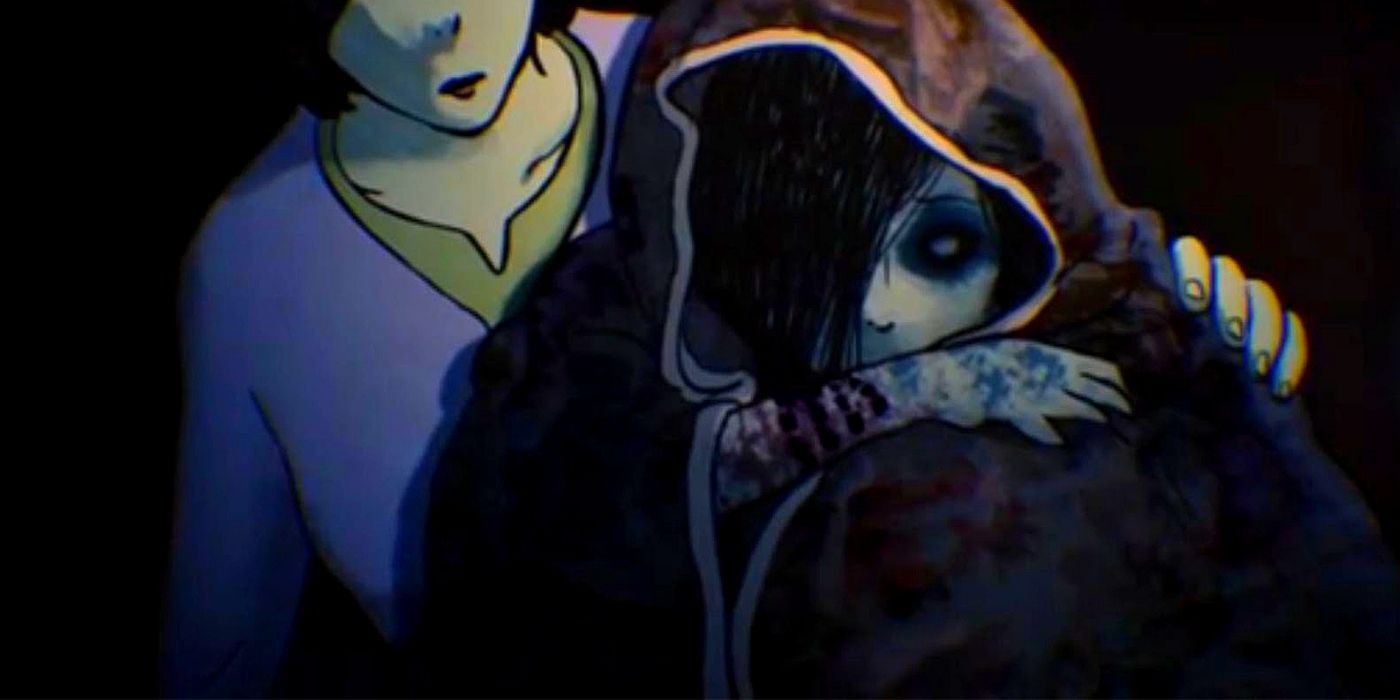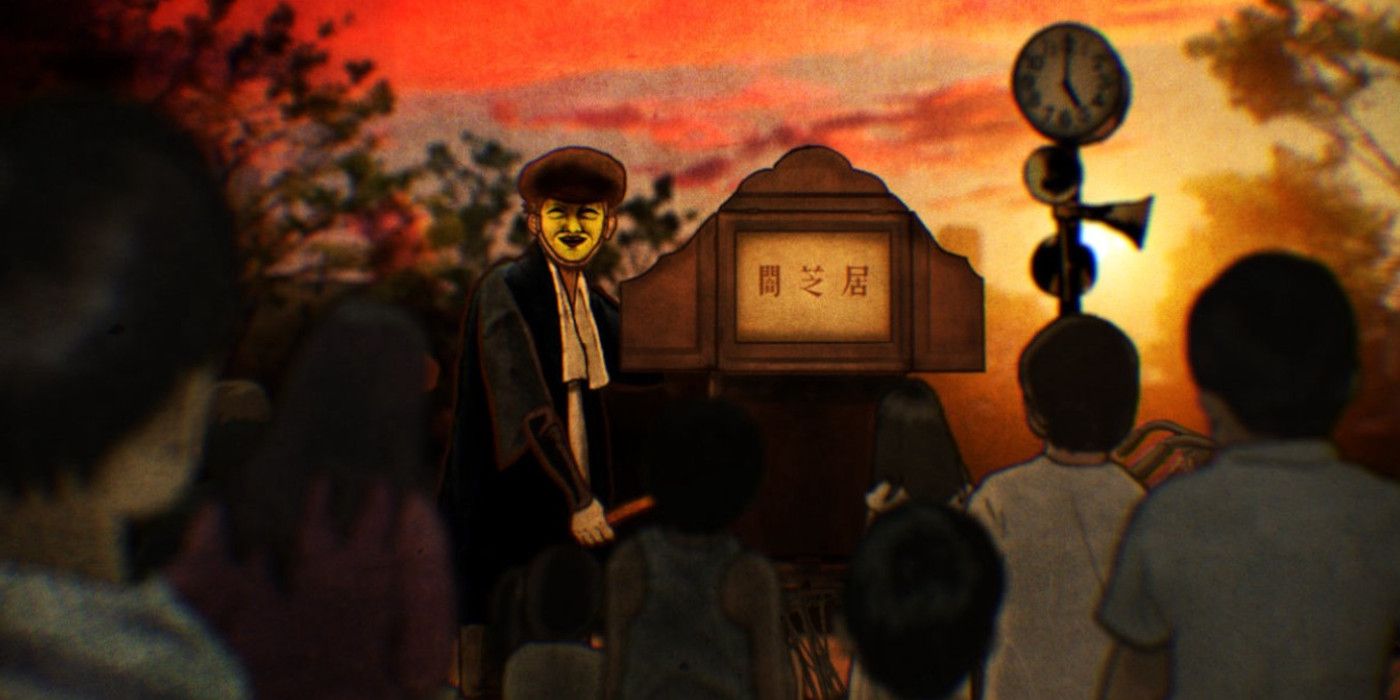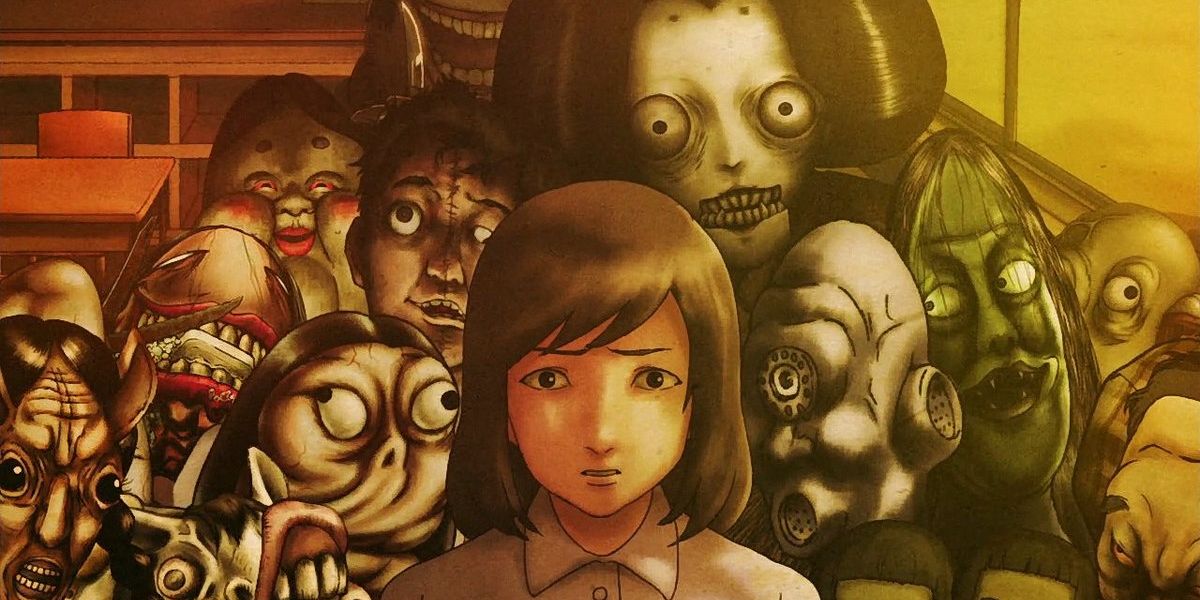Yamishibai: Japanese Ghost Stories is an animated short series consisting of supernatural folklore vignettes based on myths and urban legends from Japan. The series is now on its ninth season, which just aired in the summer of 2021.
Despite this respectable length, the series isn’t as popular as other supernatural horror series such as Another and Jujutsu Kaisen. The show's non-traditional art and animation style may simply not appeal to international viewers, while Japanese folklore may not resonate with most Western audiences. Regardless, Yamishibai deserves to be recognized as one of the best horror anime for its homage to Japanese lore and classical storytelling.
The series’ storytelling format is similar to Japan’s street theater known as kamishibai (“paper play”). This was a method of storytelling that was popular during the Great Depression and Japan's post-war period. Kamishibai consists of a narrator (kamishibaiya) who goes to street corners and tells stories using illustration boards placed in a miniature stage device. As the narrator tells the story, they change the image in the device.
Yamishibai introduces this classical method of storytelling to modern audiences, but with a unique twist. In Yamishibai, our narrator is an old man with a creepy yellow kabuki-like mask who gathers children around in a playground to tell scary stories. Right from the beginning of each episode, the narrator’s presence creates an eerie mood that cleverly captures viewers’ attention and draws them into the story.
The creators of Yamishibai also add subtle changes to the storytelling to make each season unique. In the final episode of Season 3, “Drawing,” the story focuses on a little boy who draws monsters harming humans, which shockingly happens to be the narrator from the previous seasons. This episode showcases how the narrator got started in his kamishibai profession. In Season 4, the narrator has more of a presence in each short tale, unlike the previous seasons. As for the latest season, the narrator’s stories are based on the Chinese Zodiac.
The content in Yamishibai is mainly about ghost stories based on myths and urban legends in Japan, or else it incorporates cultural items with a spooky twist such as Japanese-style vending machines, manga cafes, miniature sculptures called netsuke and pellet drums. For example, in Season 1, Episode 8, “The Umbrella Goddess,” a little boy sees a lady holding an umbrella with her mouth on a sunny day. The boy ends up being locked in a toolshed for a night to prevent the Umbrella Goddess from attacking him. The Umbrella Goddess is based on the Hachishakusama (“Eight Feet Tall”), a demon that attacks children.
Furthermore, many of these horror tales incorporate a moral lesson or superstition to teach viewers. For instance, in Season 2, Episode 11, “Picking Up,” a college student finds a drafted novel on an overhead rack. He miraculously wins a writing contest but has to verify that he wrote the story to the award presenter. He lies and tells the presenter that he is the author. When he goes to the event to receive the award, he is surrounded by several skeleton people, and soon after, he confesses that he isn’t the writer of the story, which leads the skeleton people to attack him. The episode presents a moral lesson about students not plagiarizing their work.
Aside from the unique form of storytelling and the content of the ghost stories, the series does an excellent job in executing its jump scares -- a standard horror film element where the audience is shocked or taken by surprise with a sudden shift or abrupt change in movement or image. Every season has several jump scares showcasing images of demons and misconfigured “human beings.” The series also cleverly executes when there should be complete silence or eerie noises during a scene, further enhancing the jump scare experience.
Despite its low-budget animation and ghost stories that may not appeal to Western audiences, Yamishibai combines a highly unique method of storytelling with many of the tropes and elements of the horror genre, making it one of the best underrated horror anime to check out.



